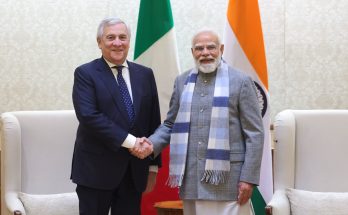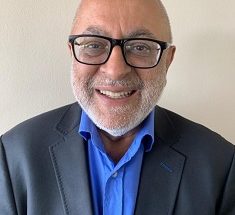 After nearly 60 years of struggle, marked by two major agitations which saw an immolation in 2010 and the death of over 1000 people, the backward and impoverished region of Telangana has been carved out of the politically muscular state of Andhra Pradesh. Telangana will become the 29th state in Indian Union and the fifth state in south India once the Parliament of India approves the Andhra Pradesh Reorganisation Bill by a simple majority. India’s Home Minister Sushilkumar Shinde has said that the UPA government hopes to bring the Bill before Parliament in its winter session and not the Monsoon session which begins August 5.
After nearly 60 years of struggle, marked by two major agitations which saw an immolation in 2010 and the death of over 1000 people, the backward and impoverished region of Telangana has been carved out of the politically muscular state of Andhra Pradesh. Telangana will become the 29th state in Indian Union and the fifth state in south India once the Parliament of India approves the Andhra Pradesh Reorganisation Bill by a simple majority. India’s Home Minister Sushilkumar Shinde has said that the UPA government hopes to bring the Bill before Parliament in its winter session and not the Monsoon session which begins August 5.
Political Arithmetic
The move by the Congress leadership (July 30) to bifurcate Andhra ahead of the 2014 general elections has been spurred by political expediency. It is difficult to ignore that things had been quiet on the Telangana front. In fact, K. Chandrasekhara Rao, supremo of Telangana Rashtra Samithi (TRS) which leads the Telangana statehood agitation had retired to his farmhouse in Medak, about 70 kilometer north west of Hyderabad. He was not even meeting party leaders. The joint action committee of Telangana was on silent mode for quite a while.
Undivided Andhra Pradesh is the third biggest state when it comes to seats in the Parliament. It sends 42 elected members to Parliament, of which 17 come from the Telangana region. Made up of ten districts, the Telangana region also has 119 assembly seats. Andhra helped the Congress regain power in the Centre in 2004 when it bagged 29 of the 42 seats. In 2009 the Congress tally went up to 33 and the architect of it all was the local Congress strongman Y.S. Rajasekhara Reddy. YSR also captured the state for the Congress.
The Congress party’s fortunes in the state have been flagging since the death of YSR in a helicopter crash (February 2009). While Andhra Pradesh has a Congress chief minister in Kiran Kumar Reddy, it has lost Y.S. Jaganmohan Reddy, the son of YSR who floated the YSR Congress Party when the Congress top brass in Delhi refused to make him CM and hand him his father’s political legacy. Jagan, though in jail on corruption charges, has been increasing his political influence in the coastal and Rayalaseema region of Andhra. His agenda has been an undivided Andhra.
 By announcing its decision to bifurcate Andhra and create the new state of Telangana, the Congress feels it has upstaged its main political rival, the Bharatiya Janata Party (BJP), won over K.Chandrasekhara Rao and his TRS, weakened the Telugu Desam Party (TDP) which is its main rival there, and opened a window of opportunity to have an alliance with Jagan Reddy. While Jagan has opposed the formation of Telangana, as did his father after coming to power, he has also expressed his distaste for joining hands with the BJP or the TDP. The Congress hopes to forge a post-poll alliance with his YSRCP and reap the advantage of seats Jagan will win in his stronghold.
By announcing its decision to bifurcate Andhra and create the new state of Telangana, the Congress feels it has upstaged its main political rival, the Bharatiya Janata Party (BJP), won over K.Chandrasekhara Rao and his TRS, weakened the Telugu Desam Party (TDP) which is its main rival there, and opened a window of opportunity to have an alliance with Jagan Reddy. While Jagan has opposed the formation of Telangana, as did his father after coming to power, he has also expressed his distaste for joining hands with the BJP or the TDP. The Congress hopes to forge a post-poll alliance with his YSRCP and reap the advantage of seats Jagan will win in his stronghold.
Interestingly Jagan’s father had stoked the Telangana separatist sentiment to oust Chandrababu Naidu of the TDP in 2004 and bring the Congress to power. But once he became the Andhra chief minister he became a virulent opponent of Telangana. He retained his hold in the 2009 elections on the anti-Telangana agenda and decimated the TRS in its own region. He convinced the Congress leadership in Delhi that there was no genuine demand for Telangana. The agitation was almost but dead till his own death changed it all.
K.C. Rao of the TRS has done business with the Congress earlier too. Rao was initially with the TDP, but split from it because of Naidu’s reluctance on the Telangana statehood demand. In 2001 he formed the TRS and in 2004 forged an alliance with the Congress for the polls. TRS became part of the UPA coalition. After watching the Congress flip-flop on Telangana and go back on a promise made to him, Rao withdrew support. He fought the 2009 election as a faction of the opposition coalition. Now that the Congress has made his dream come true (almost), it expects in a gratitude the support of Rao and the Telangana seats.
However, Rao has ruled out a merger with the Congress till a separate Telangana state becomes a reality. He does not want to be short-changed again. Soon after the announcement, the Congress General Secretary in charge of Andhra Pradesh, Digvijay Singh, reminded KCR to keep his promise of merging with the Congress. Some in the TRS are opposing an outright merger with Congress. They feel that the vacuum created by such a move would be encashed by their arch rival TDP which has a vast network of cadres in the region. They want the Congress to form a poll alliance with TRS and another former ally MIM so that in a multi-cornered contest TDP stands to lose out. They also want the Congress to promise certain number of assembly and Lok Sabha tickets.
The Congress’ move has also tripped the BJP. Rajnath Singh, the BJP chief, had announced that the NDA government will deliver Telangana once it comes to power post 2014. With this promise its campaign head and perceived prime ministerial candidate Narendra Modi was scheduled to embark on an Andhra tour to revive the BJP in the Telangana region. Modi was scheduled to address a series of meeting starting with a public meeting at Hyderabad on August 11 to focus on the contentious statehood issue. However, the BJP has changed its plan now, and is now concentrating its energy in the Seemandhra region. BJP circles said that Modi will now address half a dozen meetings in Seemandhra, starting in the temple town of Tirupati and ending at port city of Visakhapatnam.
How Many More New States?
The Congress’ announcement on Telangana has had two immediate consequences. It has fuelled languishing movements for statehood across the country. There is a new energy in the demand for Gorkhaland in Darjeeling and fresh agitations in Assam for Bodoland. BSP leader Mayawati has called for a further division of Uttar Pradesh. The demand for Bundelkhand, planned to be carved out of Madhya Pradesh and UP, as well as Vidarbha from Maharashtra has now gained a fresh momentum.
Within the Congress, the party has seen a spate of resignations. Guntur Member of Parliament has resigned his seat and from the Congress. Three Congress ministers in the state government and 26 legislators have resigned in protest. More are expected to follow. Chief Minister Reddy, who has been opposing the bifurcation, had in a letter to Congress chief Sonia Gandhi drawn attention to the fact that out of the 2.5 crore voters in Telangana, 50 lakh were settlers from outside the region and they were a force to reckon with in 5 Lok Sabha and 34 assembly segments. The settlers fear persecution in the new Telangana state. They will be miffed with the Congress and vote against the party. This could be a problem for the Congress.
Birthing new challenges
Andhra Pradesh has been one of the fastest growing states in the country and has brought down poverty level to 9.2 percent, which is half of the national average. Being a larger state it had a bigger say in decision making at the Centre and managed to secure more funds, which may not be possible after bifurcation.
The division will bring many challenges such as sharing of resources, including river waters, mineral and oil resources. Telangana region is landlocked and will have to incur additional expenditure to access ports in coastal Andhra Pradesh for exports. Similarly, businesses in Andhra will have to pay more to access bigger markets like Hyderabad.
Security Worries
As crucial is the security issue. The Srikrishna Committee report has pointed out the proximity of Telangana to “live” Red zones. Telangana will have to protect itself from turning into a Naxal hotbed just as Chhattisgarh (carved out of Madhya Pradesh) and Jharkhand (carved out of Bihar) have become. The report also mentions that Maoist sympathizers have been supporting the Telangana stir. Many have been whispering that the main reason for KCR walking out of the UPA coalition and government at the Centre was pressure from the Naxals.
It’s not clear yet how the complex electoral arithmetic underpinning the decision to create a new state will play out for the Congress. By agreeing to create a new state, the Congress, the grand old party of India, may have taken a calculated gamble, but has also provided fresh fodder for many languishing movements for statehood. It’s time to move beyond mere political calculations and take a hard look at the economics of creating new states.





